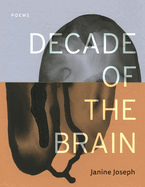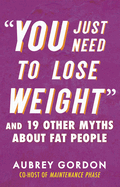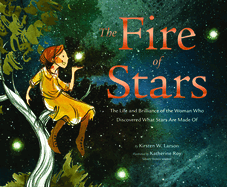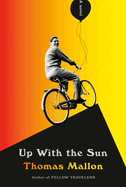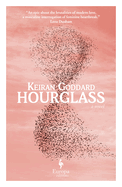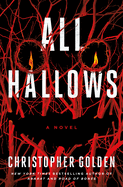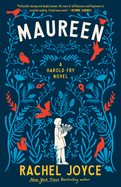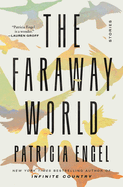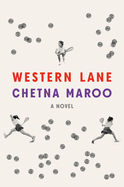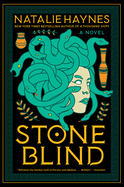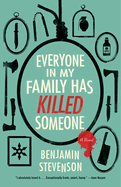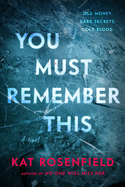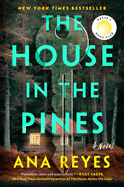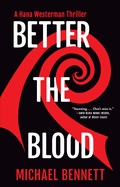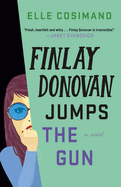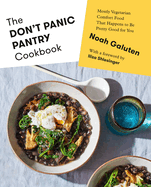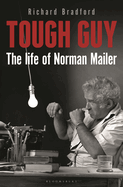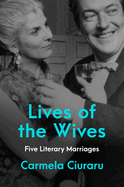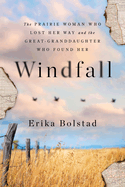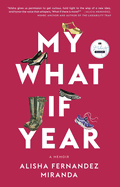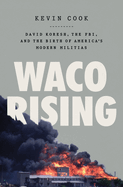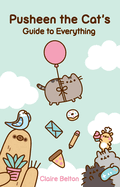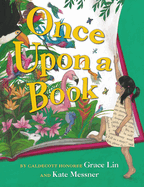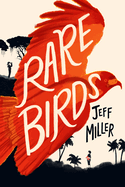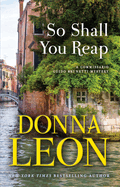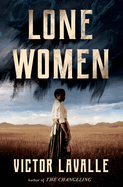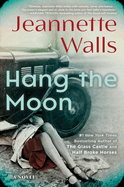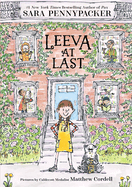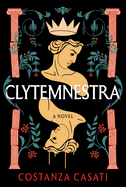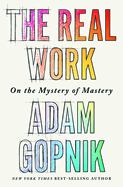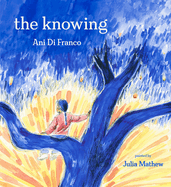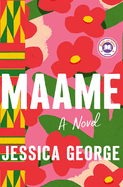Friday, February 10, 2023
This week, Janine Joseph delivers 40 "hard-hitting and formally inventive poems" in her second collection, Decade of the Brain; Aubrey Gordon's "smart and informative" "You Just Need to Lose Weight" debunks 20 common myths about fat people; and in the "refreshing, revealing" picture book The Fire of Stars, Kirsten W. Larson and Katherine Roy "perfectly pair" Cecilia Payne's growth from inquisitive girl to celebrated astronomer with the birth of a star. Plus so many more!
In The Writer's Life, British poet Keiran Goddard discusses his debut novel, Hourglass--a perfect Valentine's Day read, in which the hourglass itself becomes a metaphor for equalizing past, present and future in a romantic relationship.
[A correction to last week's issue headline: we misspelled the author's name for our interview with Newbery winner Admina Luqman-Dawson. Our apologies!]
Up with the Sun
by Thomas Mallon
Novelist Thomas Mallon has mastered the art of fictionalizing the lives of historical figures: Richard Nixon in Watergate, Ronald Reagan in Finale and so on. Dick Kallman--an American actor turned antiques dealer who was murdered in 1980--may not have been a prominent historical figure, but in Up with the Sun, Mallon leans on the not-quite star's biography to tell a story every bit as revealing about American ambition as the author's previous efforts centered on political giants.
The novel's even-numbered chapters unspool like a mystery. They're narrated by Matt Liannetto, a native New Yorker who makes his living as a pianist for musicals; he met Dick in 1951, when they were working on the same show. As it happens, Matt was at a dinner party at Dick's Manhattan duplex the night before Dick and his live-in boyfriend were fatally shot in what seems to have been a robbery gone wrong.
Dick's unlikability is on hilariously preening display in Up with the Sun's odd-numbered chapters; an omniscient narrator remarks that with Dick, "ambition stuck out like a cowlick or a horn, fatal to an audience's complete belief in almost any character he was playing." These chapters trace Dick's life as a well-born striver whose many attempts to set Hollywood afire, most promisingly with the doomed sitcom Hank (1965-66), ended in crushing disappointment refashioned into rage. The wonder of Mallon's characterization is that, for all of Dick's weaselly ways, he remains sympathetic--except when he crosses Lucille Ball. Then he's pushing it. --Nell Beram, author and freelance writer
Discover: Part mystery and part homage to showbiz also-rans, this sensational (in both senses) novel imagines the aftermath of real-life actor Dick Kallman's 1980 murder and the three decades that precede it.
Hourglass
by Keiran Goddard
Even readers who don't know that the British writer Keiran Goddard is a poet will suspect as much from the lyricism of Hourglass, his debut novel. This slender work presents three periods in the life of a young man so distraught that he writes: "The year you arrived I had been shrinking myself." The person he writes this to is the woman with whom he becomes romantically involved. Readers experience this romance through the novel's three sections: the relationship's inception, when the unnamed woman buys one of the unnamed narrator's essays for her magazine and asks to meet him; three years later, during their relationship; and five years after their breakup, when the still-grieving narrator writes, "I do not know where you are."
Each section contains short chapters of a page or two of terse paragraphs, a structure that may remind some readers of the stories of Lydia Davis. At one point, the narrator writes that his girlfriend is "not the most beautiful person I have ever seen. The most beautiful thing. Which is a much bigger category. And I cannot turn away." In these more poetic moments, the novel echoes the rhythm and sentiments of Pablo Neruda's love poems. Goddard's narrator writes movingly of his emotionally fragile mother, his complicated relationship with faith and other factors that define his life. "You have to live," he says. "What else is there to do with a life?" Hourglass is an elegant testament to the difficulty of figuring out how to do that. --Michael Magras, freelance book reviewer
Discover: Keiran Goddard's elegant debut novel takes readers through three phases of a relationship, with moving reflections on faith and the challenges of daily life.
Maureen
by Rachel Joyce
Maureen, Rachel Joyce's slim, lyrical seventh book and her third Harold Fry novel, delves deeply into a character who is at once familiar and enigmatic: Maureen Fry, the prickly wife of walker-turned-public-hero Harold. Joyce's debut, The Unlikely Pilgrimage of Harold Fry, followed Harold's impromptu journey to see a former colleague (whose story Joyce later told in The Love Song of Miss Queenie Hennessy). Now, 10 years after Harold's walk, Maureen irons her "best blue blouse," leaves Harold with a freezer full of home-cooked meals and sets off on a pilgrimage of her own.
In brief, introspective chapters, Joyce (The Music Shop) follows Maureen as she drives north, making the journey to the memorial sculpture garden built by Queenie and now maintained by volunteers. She is searching for some sign of David, her son, whose death by suicide 30 years before has left Maureen unable, ever since, to move forward. Joyce explores the contours of long-term grief as well as the effects of the pandemic, the quiet loneliness (and sometimes joy) of encountering strangers and the difficulty, sometimes, of opening oneself up to new experiences. Maureen is a complicated woman, frequently held back by her painful memories and longstanding patterns, but surprised--eventually--by her own capacity for connection. Along her journey, she notices details such as birds, dune grasses and light, but she also (again, to her own surprise) finds herself relying on others for help and perspective.
Bittersweet and quietly stunning, Maureen is a poignant end to Joyce's trilogy about the Frys and a meditation on opening up and moving forward. --Katie Noah Gibson, blogger at Cakes, Tea and Dreams
Discover: Rachel Joyce ends her Harold Fry trilogy with a lyrical, bittersweet novel exploring the journey of his wife, Maureen.
The Faraway World: Stories
by Patricia Engel
The 10 short stories in Patricia Engel's fifth book, The Faraway World, contrast dreams and reality. Money and religion are opposing pulls for her Latinx characters as they ponder whether life will be better at home or elsewhere.
These stories, all told in the first person, are set in Colombia, Cuba or the U.S.--often, the narrators have roots in more than one, so their loyalty is split. In "La Ruta," Mago, a Havana cabbie, becomes infatuated with a passenger who's visiting churches 300 days in a row as a way of praying to join her aunt in San Diego. Mago in turn contemplates leaving his nagging girlfriend, Florencia, who delivers a grim punch line: "I realized life is hard and miserable no matter where you live." In "Guapa," 40-something Indiana works in a New Jersey factory and is addicted to cosmetic surgery, for which she regularly flies home to Colombia. When her crush on a younger co-worker leads to an ironically horrendous incident, she voices a conclusion similar to Florencia's: "Bad fortune is as certain yet unpredictable as the weather."
Existence is bleak for some characters, but moments of connection can temper the tone. In "Libélula," a housekeeper resents her employers, yet learns that she, effortlessly, possesses something they covet. The standout is "Fausto," starring Paz, who works in her father's restaurant in Miami, and her boyfriend Fausto Guerra, a security guard. The couple are saving up to get married, but their plans go awry when Fausto is drawn into illegal schemes.
Engel (Infinite Country; Vida) spins morally complex and troubling stories featuring flawed but gutsy characters. --Rebecca Foster, freelance reviewer, proofreader and blogger at Bookish Beck
Discover: Patricia Engel's 10 short stories are narrated by plucky, imperfect characters who weigh up wealth and piety as they contemplate their chances in their homeland or abroad.
Western Lane
by Chetna Maroo
A slender yet potent family drama set in an unnamed English town, Chetna Maroo's Western Lane is the story of a girl driven to become an accomplished squash player by her father, who channels his grief over his wife's death into athletic ambitions for his daughters. The novel opens at the onset of a mild autumn, the unpredictable moods of classic British weather serving as an atmospheric backdrop for the young narrator as she emerges from the shadows of her family and finds herself occupying its pulsating center.
Eleven-year-old Gopi has recently lost her mother. Her teenage sisters, Mona and Khush, are as bereft as Gopi, but the three girls are relatively okay compared to their devastated father. Pa is a self-employed electrician who, in his despair, has lost sight of his children's needs. The only time he truly communicates with Gopi and her sisters is when they discuss squash techniques or practice drills at the local sports center, Western Lane, a decrepit place with peeling paint, a bar and a couple of barely used glass-backed squash courts. As the sisters become increasingly unmoored from their emotionally unavailable father, squash serves as the family's only common language.
British Indian author Maroo, winner of the 2022 Plimpton Prize for Fiction from the Paris Review, is a marvelous and restrained storyteller. The hypnotic gloom of Western Lane is undercut with subtle humor and an innocence that radiates from Gopi as she tries with heartbreaking sincerity to embrace the future her father has chosen for her. --Shahina Piyarali, reviewer
Discover: A haunting British debut about a young motherless athlete and her relationship to an intense racket sport that offers liberation from the grief and confusion of losing a parent.
Stone Blind
by Natalie Haynes
With Stone Blind, Natalie Haynes (A Thousand Ships; Pandora's Jar) brings her authoritative expertise in Greek myths to bear on Medusa, whose story is fresh and surprising in this telling.
Medusa is delivered as an infant mortal to the two elder Gorgons who will be her sisters--in this version, they are monsters only in their unusual appearance, and they care for their fragile mortal sister with great tenderness. As a young woman, Medusa is raped by Poseidon in Athene's temple. The goddess is so offended by this sacrilege that she punishes the victim, replacing Medusa's hair with snakes and bestowing her most famous attribute: the ability to turn any living creature to stone by eye contact. In a third thread, the demigod Perseus comes of age as a bumbling incompetent: self-serving, lazy, whining, unnecessarily violent.
These threads come together in complex ways when gods are offended and angered and play out their dramas with mortal pawns. Traditional storytelling has cast Perseus as a hero and Medusa as a monster, but Haynes does not concur: "The hero isn't the one who's kind or brave or loyal. Sometimes--not always, but sometimes--he is monstrous. And the monster? Who is she?"
Haynes's genius lies not only in her subtle recasting of this story--with an emphasis on who assigns roles and draws conclusions--but also in her dryly scathing humor. Haynes writes in many voices: those of olive trees, Medusa's snakes-for-hair, a crow, the gods and mortals that make up this twisting tale. A surprising ending caps off her truly delightful and novel version of a very old story. --Julia Kastner, librarian and blogger at pagesofjulia
Discover: Natalie Haynes splendidly showcases classical scholarship, witty humor and an appreciation for nuance in this reframing of the story of Medusa.
Brutes
by Dizz Tate
Dizz Tate's first novel, Brutes, is set in Falls Landing, Fla., a small town formed of theme parks, mall food courts, gated communities and swampland. At its center is the mystery of a missing teenage girl, and the group of younger girls who adored her: the narrative voice is the unusual first-person plural "we," which perfectly suits a girlhood of conformity and togetherness. The 13-year-old narrators yearn for individual recognition but also fear separation.
"Where is she?" the girls imagine Sammy's parents asking the morning after her disappearance, and this question will echo. They worshipped, followed and watched Sammy on the nights when she climbed over the wall of her exclusive community to meet her boyfriend, Eddie; they share her love for Eddie and, after she's gone, shift to attach themselves to Sammy's best friend and rival, Mia. Sammy and Mia had both been affiliated with Star Search, the local talent agency, and everyone in town wants to be selected, to be seen as special, to be given a business card or a plane ticket to L.A. "We squashed our faces against the glass of our own lives. Is this it? we asked. Are we having fun like they have fun?"
Tate's Florida is steamy and thickly rank, with blinding sunlight and shadowy depths, not least in the lake that many residents believe houses a monster--maybe the monster that took Sammy. Brutes is a dark coming-of-age tale and meditation on childhood and the cusp of adolescence: authentic, often grim, but with glimmers of hope. --Julia Kastner, librarian and blogger at pagesofjulia
Discover: A group of 13-year-old girls tries to deal with another teenager's disappearance alongside their own coming-of-age in an unattractive Florida town beset by increasingly adult threats.
Mystery & Thriller
Everyone in My Family Has Killed Someone
by Benjamin Stevenson
Ernie Cunningham, the narrator of this clever mystery, isn't kidding when he says that everyone in his family has killed someone. He does joke a lot, but about murder he is serious. He even ups the ante by adding: "Some of us, the high achievers, have killed more than once." Benjamin Stevenson (Trust Me When I Lie) leverages his background as a stand-up comedian and work at several publishing houses and literary agencies to create a distinctive mystery that riffs on the genre while also respecting it. Everyone in My Family Has Killed Someone is resplendent in its sophisticated wit, characters with myriad motives and adroit plotting that indulges in clichés but manages to avoid the predictable. Stevenson also does the near impossible: he mixes the lightness of a cozy with the intensity of a hard-boiled thriller.
Ernie isn't thrilled to attend a "mandatory" family reunion at an Australian ski resort because of his unusual relatives. He especially dreads seeing his brother, Michael, newly released from prison where he served three years based on Ernie's testimony. Before Michael arrives to the gathering, Ernie is caught up in the murder of a stranger, whose death looks strikingly similar to the work of a known serial killer.
Though the plot seems straightforward, Stevenson's approach is not. Ernie loves crime fiction, often breaking the fourth wall and telling readers to look for clues on certain pages, then saying he is an unreliable narrator, reverently citing Ronald Knox's "10 Commandments of Detective Fiction"--and gleefully breaking each one. Stevenson never stumbles as his storytelling tricks lead to a satisfying ending. --Oline H. Cogdill, freelance reviewer
Discover: Sophisticated wit and clever plotting elevate this highly entertaining thriller in which everyone in the narrator's family really has killed someone.
You Must Remember This
by Kat Rosenfield
A crumbling mansion with hidden passageways and secret rooms makes a formidable backdrop in Kat Rosenfield's You Must Remember This, which skillfully explores dementia, family dynamics and greed. Rosenfield's second adult novel begins slowly, establishing the personalities and motives of each member of the dysfunctional Caravasios family in a realistic plot ramped up by an incisive mystery with a soupçon of the gothic.
To celebrate Christmas, 85-year-old Miriam's three adult children and granddaughter, Delphine Lockwood, bring her from an assisted living facility to the Whispers, her childhood home in Bar Harbor, Maine. Miriam's homecoming is rife with bickering by her children, each of whom expects to inherit a portion of her $20 million fortune. Only Delphine and Adam, Miriam's personal caregiver, seem to care about her. Miriam is suffering from accelerating dementia and has been near death for a while, so it's no surprise when it happens, but Delphine believes her grandmother may have been murdered. Those suspicions ramp up when details of Miriam's will are revealed.
Rosenfield (No One Will Miss Her; Amelia Anne Is Dead and Gone) builds the novel's tension in the family's individual relationships with Miriam and with the house itself. To Delphine, Miriam is a loving grandmother with tales about a loving marriage cut short when her husband died in an accident when she was in her 30s. Miriam's three children have different opinions of their mother, who is often weighed down by her memories. The mansion's secret passageways, into which Miriam often disappears, also reflect her scattered mind. You Must Remember This delivers a haunting plot with surprises in every room. --Oline H. Cogdill, freelance reviewer
Discover: An elderly dying woman contends with her memories and bickering children in this haunting thriller set in a mansion filled with secret passageways.
The House in the Pines
by Ana Reyes
Ana Reyes deftly mixes themes of friendship, mental health and manipulation in The House in the Pines, her satisfying debut. The novel works as an intense psychological thriller that thrives on subtle, but forceful, action.
Before she left for college, Maya Edwards's best friend, Aubrey West, unexpectedly died while talking with Maya's boyfriend, Frank Bellamy. No foul play was uncovered, and the authorities ruled the 17-year-old's death accidental. Maya believed Frank was involved but couldn't convince the police or her mother of her suspicions. Seven years later, Maya's life seems to be on track: she lives in Boston with a nice boyfriend, Dan, with whom she feels she has a future. But she hides from Dan her addiction to a medication that helps her sleep while continuing to mourn Aubrey. One restless night she sees a trending video showing another seemingly healthy young woman dying in a diner while with Frank. Again, Maya is convinced Frank is responsible, so she travels to her hometown of Pittsfield, Mass., to confront him. Maya is sure the answer is at Frank's cabin in the woods where she and Aubrey used to visit. Again, no one believes her and, given her fixation on Frank, her mother is worried about her daughter's mental health.
Reyes's brisk plotting and believable characters keep The House in the Pines on track. Readers will root for the likable Maya as she tries to overcome her addiction and prove her sanity. --Oline H. Cogdill, freelance reviewer
Discover: In this absorbing psychological thriller, a young woman's determination to prove her best friend from high school was murdered puts her mental health at risk.
Better the Blood
by Michael Bennett
Acclaimed Māori writer Michael Bennett jumpstarts a projected thriller series about police detective Hana Westerman with the thoroughly absorbing Better the Blood.
The past has a disconcerting way of reemerging in this sharply observed novel, which begins with the painstaking efforts of a daguerreotypist in 1863 attempting to capture for posterity the proud cadre of British soldiers standing around the Māori man they just hanged. Meanwhile, in modern-day New Zealand, Detective Senior Sergeant Westerman's past is catching up with her when video footage from earlier in her career resurfaces, documenting her unsympathetic policing of fellow Māori people at a protest. It's one of several videos she receives from an anonymous source as a bizarre series of killings begins to emerge around Auckland. Besides the videos, the murders also seem to be linked by a single signature left at the crime scene: a drawing "like something from nature, the perfect spiral on a hermit crab shell. The inward-circling meteorological map of a cyclone approaching landfall.... A shape that's organic, harmonious, pleasing to the eye."
Bennett writes about Māori culture and history with generosity and care, reflected in the final acknowledgments paid to those in his community who lent him additional insights and guidance. He also crafts a compelling detective in Hana Westerman, recently divorced from her senior officer husband, with whom she co-parents their teenage daughter, an aspiring singer and Māori rights activist. Under Bennett's strong command of tension in all directions, Better the Blood is a magnificently arranged confrontation with histories personal and public. --Dave Wheeler, associate editor, Shelf Awareness
Discover: In this tense thriller with a strong historical undercurrent, a Māori detective is caught between her culture and her career as she pursues a serial killer on a spree around Auckland.
Finlay Donovan Jumps the Gun
by Elle Cosimano
Single mom Finlay Donovan has been finding the life of a romantic suspense novelist to be unexpectedly dicey. "I needed a new career," she concludes. "One that didn't involve police officers, corpses, or the Russian mob." That Finlay keeps her magnet-for-meshugaas job will gratify readers of the third novel in Elle Cosimano's bawdy, resourceful and dependably funny Finlay Donovan mystery series.
Finlay Donovan Jumps the Gun picks up where its predecessor, Finlay Donovan Knocks 'Em Dead, leaves off: narrator Finlay and her nanny/sidekick Veronica "Vero" Ruiz are desperate to sell a bullet-riddled Aston Martin to raise money to pay off Vero's $200,000 debt to a loan shark (long story). They must also determine the identity of EasyClean, who is blackmailing the Russian mob boss to whom Finlay owes a favor (longer story). Finlay has high hopes of finding EasyClean during her week with Vero at the Fairfax County, Va., citizen's police academy: a teenage hacker for the mob, whom she trusts (sort of), is convinced that EasyClean is a cop.
Cosimano (Seasons of Chaos; The Suffering Tree) is as in control of this material as Finlay is out of control of her life. Finlay may be writing romantic suspense, but Finlay Donovan Jumps the Gun often plays like a comic action thriller. This isn't to say that the story doesn't feature romantic escapades. Frets Finlay at one point, fearing the worst: "We'd been involved in the murder and disposal of four men, but we were going to prison because of Vero's thong." --Nell Beram, author and freelance writer
Discover: In the third novel in this bawdy, resourceful and dependably funny mystery series, romantic suspense novelist and single mom Finlay Donovan must figure out who is blackmailing a Russian mob boss.
Science Fiction & Fantasy
All Hallows
by Christopher Golden
Bram Stoker Award-winner Christopher Golden (Dead Ringers; Road of Bones) blends 1980s nostalgia with eldritch horrors in Halloween terror-fest All Hallows. This ensemble cast horror story is a bloody race against the clock to survive the night set against a backdrop of family and neighborhood drama.
It's Halloween night in 1984 Massachusetts, and Tony Barbosa and his teen daughter Chloe have put extra effort into their annual homegrown Haunted Woods attraction. Financial troubles and an impending move are sounding a death knell for the tradition. Their neighbors on Parmenter Road face their own struggles. Barb Sweeney fights to stay strong for her kids in the face of her husband's constant infidelity. There are whispered rumors that the Burgess couple ran a brothel in their last town and abducted children. While conflict distracts the adults, the kids on Parmenter Road notice something odd while trick-or-treating: unknown, unkempt children in costumes that look like they came from bygone decades are appearing around the neighborhood. Tween Rick Barbosa and his best friend Billie are trailed by a little boy in a scarecrow costume whom they later must rescue, but Rick is sure something about the child is off. Other creepy children beg kids in the neighborhood for help hiding from "the Cunning Man," the monstrous being hunting them. His coming spells gruesome disaster as well as some surprising twists.
Golden captures the flavor of the 1980s suburb through accurate social dynamics and pop-culture references. Readers looking for supernatural scares dressed up in vintage garb will find both tricks and treats here. --Jaclyn Fulwood, blogger at Infinite Reads
Discover: Christopher Golden's bloody, folkloric ensemble horror story is set in 1980s suburbia.
Food & Wine
The Don't Panic Pantry Cookbook: Mostly Vegetarian Comfort Food that Happens to Be Pretty Good for You
by Noah Galuten
At the outset of the Covid-19 pandemic, husband and wife team Iliza Shlesinger (a comedian) and Noah Galuten (a chef) started an Internet cooking series, "Don't Panic Pantry," to entertain and educate people stuck at home with pantries full of food they didn't know how to cook. Hundreds of episodes later, Galuten brings these lessons to the page in The Don't Panic Pantry Cookbook. Galuten calls it the cookbook he's "always wanted to write (deeply personal, filled with pasta and lentils and beans)," informed by his experience making videos for home cooks of every background and comfort level in the kitchen. He encourages home cooks to start with what they can, promising a set of skills and dishes that will ultimately rival any "mediocre take-out place" that tempts with convenience and ease. This mindset is then combined with seven instructions for eating well. Easy-to-follow guidelines like "balance is good" keep these from veering into toxic diet culture.
This seemingly simple approach to home cooking is not to say that the recipes in The Don't Panic Pantry are basic, boring or bland--anything but. Flavors abound in the breakfasts, snacks, sides and mains offered up here (many of which are vegetarian by default, though there are a few meat-forward dishes): Jalapeño-Pesto Hummus for a hearty snack, Ginger-Cilantro Chicken Noodle Soup for a warming meal, Krauty Beans for a fast dash of something savory. "You can cook," Galuten insists in the introduction, and with easy-to-stock ingredients and simple-to-follow instructions, The Don't Panic Pantry is an excellent tool for any home cook to find out just how true that statement is. --Kerry McHugh, freelance reviewer
Discover: Noah Galuten's easy-to-follow cookbook, filled with hearty dishes inspired by his own home meals, offers entertainment and education.
Biography & Memoir
Tough Guy: The Life of Norman Mailer
by Richard Bradford
Readers of Richard Bradford's Tough Guy: The Life of Norman Mailer may leave it in a state of wonder--not at how Mailer managed to write so many amazing books, two Pulitzer Prize-winners among them, but at how he didn't spend more of his time in jail. Throughout his 84 years, Mailer dispensed punches like handshakes and abused four of his six wives, infamously nearly killing one. But Tough Guy makes a sturdy case for Mailer as, if not a great guy, the author of era-defining books and a cultural force worth reckoning with.
Mailer was born in 1923, the first child of an accountant with a gambling addiction and his long-suffering wife. Growing up in Brooklyn, Mailer wasn't much of a reader, but he was a brain and, at age 16, began attending Harvard, where he first tried his hand at writing the superb, hard-edged realistic fiction for which he would initially become known. Veteran biographer Bradford (Devils, Lusts and Strange Desires; Martin Amis) reliably illuminates how Mailer's work reflected his life at the time; in 1991's Harlot's Ghost, for example, Mailer "found in his fictionalised world of espionage parallels with own lifelong addiction to cheating and infidelity." Bradford is unsparing in his criticism of Mailer, referring to his "career as a shifty literary narcissist," but he justifies the existence of this biography on the grounds that Mailer's life story "comes as close as is possible to being the Great American Novel; beyond reason, inexplicable, wonderfully grotesque and addictive." Tough Guy has the latter two qualities. --Nell Beram, author and freelance writer
Discover: This biography of two-time Pulitzer-winner Norman Mailer makes a sturdy case for him as, if not a great guy, the author of era-defining books and a cultural force worth reckoning with.
Lives of the Wives: Five Literary Marriages
by Carmela Ciuraru
Even a generally rosy marriage has its thorns; "Toss in male privilege, ruthless ambition, narcissism, misogyny, infidelity, alcoholism, and a mood disorder or two," writes Carmela Ciuraru in Lives of the Wives, "and it's easy to understand why the marriages of so many famous writers have been stormy, short-lived, and mutually destructive." Lives of the Wives offers scintillating, no-prisoners-taking portraits of five such marriages.
Ciuraru (Nom de Plume) includes among her subjects--all of whom reached adulthood in the early to mid-20th century--the same-sex partners Radclyffe Hall, a writer, and Una Troubridge, a sculptor and translator. Being gay didn't stop them from following a sexist script: the masculine half, Hall, left domestic matters to the other partner--to the detriment of Troubridge's career. The Italian novelists Elsa Morante and Alberto Moravia may have never legally divorced, but their respective successes corresponded with the erosion of their marriage. Writer Elaine Dundy and critic Kenneth Tynan were another pair of incompatible writers, but, to readers' certain relief, they do ultimately divorce. Novelist Elizabeth Jane Howard also doted on a writer spouse, Kingsley Amis--and eventually came to the realization that "she had not only put herself at a crippling disadvantage as a writer, but lost the interest of her husband." Rounding out the trio of overdependent men is children's literature's Roald Dahl, who bore an appalling grudge against his movie star wife Patricia Neal's artistic hunger.
Part cautionary tale and occasional horror show, Lives of the Wives is fundamentally a shimmering love story--that is, a story of love for the creative life, if not always for the person doing the creating. --Nell Beram, author and freelance writer
Discover: Carmela Ciuraru offers scintillating, no-prisoners-taking portraits of five marriages in which at least one partner was a well-known writer.
Windfall: The Prairie Woman Who Lost Her Way and the Great-Granddaughter who Found Her
by Erika Bolstad
"My mother loved a windfall," journalist Erika Bolstad explains in her memoir, Windfall: The Prairie Woman who Lost Her Way and the Great-Granddaughter Who Found Her, which delves into a family legend about Bolstad's great-grandmother Anna. A North Dakota homesteader who supposedly staked a claim independently, Anna was an important but fuzzy figure in the author's family history. Bolstad, curious about Anna's story (and the possibility of money from mineral rights on Anna's land), took multiple research trips to the Dakotas, searching for information about Anna's life and the land laws that governed her homestead. She found much more than that: complicated oil field politics, the effects of climate change on the Great Plains, the erasure of Indigenous people from the land and the treatment of women in Anna's time and afterward. Windfall, Bolstad's first book, chronicles her quest for information, her interviews with city clerks and oilmen in the Dakotas and the uneasy parallels between Anna's story and her own fraught attempts to have a child.
Bolstad places her family history in the context of oil field fever and the American Dream writ large: the promise, always, of riches hovering just out of frame. She visits towns bearing the scars of boom-and-bust cycles and traces the long-term effects of fossil fuels and unstable economics on this often-overlooked part of North America. Windfall names and explores the conflicting politics of land use, mineral and other resource rights and who holds the decision-making power. But it's also a compelling family treasure hunt--and a thoughtful, sometimes wry, exploration of the American obsession with striking it rich. --Katie Noah Gibson, blogger at Cakes, Tea and Dreams
Discover: Journalist Erika Bolstad explores oil field politics, land laws and climate change while chasing down a family legend in North Dakota.
My What If Year
by Alisha Fernandez Miranda
In her cheerful debut memoir, My What If Year, Alisha Fernandez Miranda documents a year of exploring creative work while on a career break from her consultancy CEO role. Miranda, a Cuban American from Miami, had relocated to London. By early 2020, she was eager to avoid stagnation and take risks by moving into new arenas. She'd long been obsessed with musicals and was lucky to have a friend whose father was a theater writer for Broadway. Her time with Assassins and Flying over Sunset mostly amounted to refilling water jugs and filing invoices, yet it granted behind-the-scenes access to rehearsals, "the dreamiest two and a half weeks of my life."
When this first of four unpaid internships was cut short by Covid-19, her husband and two children had retreated to their Isle of Skye vacation home, where she homeschooled their twins and apprenticed at Retroglow, a friend's fitness company. Exercise classes adapted to lockdowns and went virtual; Miranda handled the social media promotion. Next up was helping a contemporary art dealer at Christie's in London, followed by an internship at Scotland's exclusive Kinloch Lodge. Miranda worked in the restaurant and behind the front desk, exhausting toil that made her, a perfectionist, feel like a klutz.
Miranda self-deprecatingly recounts the mishaps of her interning year, careful to recognize the privilege that allowed "a small hiatus from my real life." This self-help memoir, ideal for readers of Gretchen Rubin and Helen Russell, suggests reclaiming a beginner's mind--a humbling, invigorating experience. --Rebecca Foster, freelance reviewer, proofreader and blogger at Bookish Beck
Discover: My What If Year is a cheerful, self-deprecating debut memoir about completing four unpaid internships, including on Broadway and in a Scottish hotel, during the year that Covid-19 struck.
Political Science
Waco Rising: David Koresh, the FBI, and the Birth of America's Modern Militias
by Kevin Cook
In Waco Rising, author and journalist Kevin Cook (Ten Innings at Wrigley) revisits the 1993 siege of the Branch Davidian cult in Waco, Tex., with new reporting and insights tying the tragedy's legacy to the rise of modern-day militia movements. He begins with Vernon Howell, aka David Koresh, who "rolled in like blustery weather" to the small compound of co-religionists at Mount Carmel, outside Waco. A "self-appointed prophet," Koresh was a charismatic preacher with an encyclopedic knowledge of the Bible, particularly the book of Revelation, that eventually led to fiery sermons laced with "conspiracy theories that anticipated those of the decades to come." The heavily armed compound attracted the attention of the Bureau of Alcohol, Tobacco and Firearms (ATF), which staged an ill-conceived raid in February of 1993, lighting the fuse on a catastrophic 51-day siege.
Cook chillingly portrays the final days of those inside and outside Mount Carmel, "a tinderbox on its best day," as negotiations failed and tanks finally crashed through on April 19. The eyewitness accounts Cook tracked down are breathless and bring readers closer than ever before to the true story of Waco--one, Cook cautions, that defies a black-and-white telling. Ideas about whom to blame for the deaths of 76 Davidians "are promoted by zealots seeking to turn Waco to their own purposes. After thirty years, partisans from both ends of the political spectrum [are] still stirring Mount Carmel's ashes." This is a painful yet necessary read. --Peggy Kurkowski, book reviewer and copywriter in Denver
Discover: In this electric and chilling account, Kevin Cook details the impact of the events of Waco, marking a 30-year anniversary in 2023, on the rise of modern-day American antigovernment militias.
Social Science
"You Just Need to Lose Weight": And 19 Other Myths About Fat People
by Aubrey Gordon
Aubrey Gordon (What We Don't Talk About When We Talk About Fat), co-host of the podcast Maintenance Phase, writes of herself: "Since grade school, I have been taught that some bodies are meant to be seen, and that mine isn't one of them." In "You Just Need to Lose Weight": And 19 Other Myths About Fat People,Gordon methodically debunks anti-fat bias and 20 commonly expressed myths about fat people. "The BMI is an objective measure"; "accepting fat people 'glorifies obesity' "; and "fat people should pay for a second airplane seat": all possess flaws exposed by Gordon's research.
As Gordon explains, so much of how people think about obesity is influenced by anti-fat bias, whether consciously or not. Most fat people would be able to produce countless examples of body shaming, "helpful" food advice from strangers and interference into their lives and bodies, all of which would feel invasive and shocking to thin people. All too often, fat people are treated with disgust for "daring to show our faces and bodies in public." There's also a great deal of anti-queer and racial bias in the way that fat people have historically been treated, which further complicates issues.
Each chapter includes a myth that is carefully debunked and ends with reflection questions and/or action steps, making Gordon's book an excellent tool for those working to end anti-fat bias. Perfect for fat and thin readers alike, "You Just Need to Lose Weight" is smart and informative--and will spur many important conversations. --Jessica Howard, freelance book reviewer
Discover: "You Just Need to Lose Weight" is an important entry into the literature that explores fatness and anti-fat biases in American culture.
Nature & Environment
White Pine: The Natural and Human History of a Foundational American Tree
by John Pastor
From John Pastor, ecologist and professor emeritus at the University of Minnesota, Duluth, comes White Pine, a concise account of North America's eastern white pine tree. Pastor's book, which combines a charming professorial sensibility with the expertise and keen observations of a veteran scientist, is history for a layperson, an introduction to forest ecology, a cautionary tale of reckless natural resource harvesting and a roadmap for sustainable foresting practices to conserve precious woods and enable their flourishing. After a sobering account of the extractive logging practices that reduced once ubiquitous eastern white pine (Pinus strobus) forests into rarities, Pastor (What Should a Clever Moose Eat?) acknowledges there is a place for some harvesting, as white pine is a powerful material that can improve the material conditions for humans in a variety of ways. However, such harvesting must not submit to capitalist zealotry and, instead, should incorporate the breakthrough science of sustainable foresting with ancient wisdom from Indigenous methods of stewardship that, prior to the arrival of European settlers, maintained white pine forests for centuries.
White pines, which belong to a special category of organisms called foundation species, are not only singular organisms but they also, collectively, create microenvironments within which many other organisms can survive and thrive. While not admonishing the conservational attention paid to rare and endangered species, Pastor urges readers not to lose sight of those foundational species which make so much other life possible. White Pine's information and reverence for life, as well as the conditions life requires, endow it with value for the layperson, historian and seasoned scientist alike. --Walker Minot, freelance writer and editor
Discover: In White Pine, ecologist John Pastor tells the story of the eastern white pine tree, one of the most extraordinary life forms Earth has ever known.
Humor
Pusheen the Cat's Guide to Everything
by Claire Belton
In Claire Belton's comics collection Pusheen the Cat's Guide to Everything, the rotund, gray cat familiar from the world of GIFs has a starring role. Good-natured scenes delight in the endearing quirks of cats and other cute creatures. Pusheen, like any feline, excels at wreaking havoc in lovable ways. With an onomatopoeic "plop" and "squash," she sits where she doesn't fit, whether in a fruit bowl or wedged behind a laptop. She knocks a mug of coffee onto an open book, then promptly falls asleep on the pages. Turning her nose up at her bowl, she'll steal water elsewhere; ignoring her own bed and toys, she'll sit in a box or play with wrapping paper instead. Belton (The Many Lives of Pusheen the Cat) creates a whole family circle for Pusheen, with parents Sunflower and Biscuit; Stormy, the sister "too cute to get mad at"; and little brother Pip, who imagines himself a brave adventurer. Other pals include Sloth, Cheek the Hamster and Bo, a parakeet prone to unrequited crushes.
Rather than a single narrative, the collection features stand-alone one- or two-page spreads, largely in pastels. Seasons and holidays are prominent; topics include tips on how to beat the heat and pre-Christmas anticipation. Animals sometimes live up to stereotypes (the vacuum cleaner is Pip's archnemesis) or undertake anthropomorphized activities, such as road trips. Often, though, they wear costumes (unicorns, mermaids) or are whimsically envisioned as something else entirely (coffee drinks, baked goods). Who could resist spending time with everyone's favorite cartoon cat since Garfield? --Rebecca Foster, freelance reviewer, proofreader and blogger at Bookish Beck
Discover: Good-natured and whimsical comic scenes depict the endearing quirks of Pusheen (and the other cute creatures who are her family and friends), the rotund gray cat familiar from GIFs.
Poetry
Decade of the Brain
by Janine Joseph
Decade of the Brain is the second poetry collection from Janine Joseph, born in the Philippines. Through formal variety and with thematic intensity, she ruminates on her protracted recovery from a traumatic car accident and her journey to U.S. citizenship. Joseph (Driving Without a License) is a co-organizer for Undocupoets, a consortium for undocumented immigrant poets and their supporters; her piece "The Night Before You Are Naturalized" recalls when she became a U.S. citizen.
In 2008, a driver rear-ended her vehicle, and Joseph suffered a concussion. It took years to reclaim her concentration and sense of self. In poems like "Janine vs Janine," she refers to herself in second person to communicate her dissociation. The faltering phrases of "Every Good Boy Does Fine" (a mnemonic for musical notes) reflect her aphasia. In "Four Darks in Red," she turns frustration into an alliterative litany: "Bad body is so/ negative. Bad body won't get dressed." She sees a counselor for lingering trauma and tries alternative medicine, including acupuncture and massage, for the "commotion in my cranium."
No two poems are the same. They differ not only in length and form, but also in alignment. For instance, the lines of "My Chiropractor Gives Me a Name" curve down the page much like a spine, while "The Reverse of Volume" repeats each couplet again and again in a staticky overlap. "Erasure," in the burning haibun form, reprints one of her neurological reports and then blacks out most of its text on the following page before reducing it to a final haiku. These inventive poems pack a punch. --Rebecca Foster, freelance reviewer, proofreader and blogger at Bookish Beck
Discover: The 40 hard-hitting and formally inventive poems of Janine Joseph's second collection circle a traumatic car accident.
Children's & Young Adult
The Fire of Stars: The Life and Brilliance of the Woman Who Discovered What Stars Are Made Of
by Kirsten W. Larson, illus. by Katherine Roy
In this refreshing, revealing picture book, Cecilia Payne's growth from driven, inquisitive girl to celebrated astronomer is perfectly paired with a lyrical description of the birth of a star.
Young Cecilia "realizes all by herself" that orchids have petals like a bee's belly to trick the bees and her body hums with a "lightning bolt of discovery." The "fields and flowers" inspire Cecilia, but the family moves to London. Cecilia's new school feels like "a black hole," so she pursues scientific study on her own. She eventually wins a scholarship to the University of Cambridge and "yearn[s] to feel that lightning bolt of discovery again." When Cecilia attends a lecture by a noted astronomer, "her brain buzzes." She switches her focus to physics and becomes "the only woman in a galaxy of men." After graduation, Cecilia works at Harvard where she is finally surrounded by other like-minded women. She devotes herself to studying the mystery of "what stars really are" and, through "careful calculations and hours of observation," she discovers "the exact recipe for what makes the stars."
Kirsten Larson (A True Wonder) deftly weaves together her compelling biography of an important woman who "stick[s] to her path" despite the odds. The decision to parallel Cecilia's development with that of an emerging star is an inspired one, and Katherine Roy (Red Rover) uses pencil, ink and digital color to create luminous illustrations that crackle with energy. Extensive back matter includes further discussion of Cecilia's life and accomplishments, along with an elaboration on the process of how "a star is born." --Lynn Becker, reviewer, blogger, and children's book author
Discover: The Fire of Stars creatively describes how Cecilia Payne's passion for scientific discovery allowed her to find "the exact recipe for what makes the stars."
In Every Life
by Marla Frazee
Readers looking for picture books featuring people who look like them: rejoice! The 70-odd pencil and gouache vignettes that illustrate the spare, prayerlike text for In Every Life by two-time Caldecott honoree Marla Frazee (The Farmer and the Clown) depict people of different skin colors, abilities, ages and so on. And if the art alone wasn't inviting enough, Frazee has paired it with marvelous text.
In Every Life begins with the words "In every birth, blessed is the wonder"; below it are 10 delicate little drawings of adults holding newborn babies (or, in one case, cupping a pregnant belly). Two pages later, "In every smile, blessed is the light" introduces 10 images of one or more people indulging a happy moment: a child double-fists ice cream cones, two older women enjoy each other's company, a kid in a wheelchair catches a ball. The five ensuing spreads show people who are, respectively, engaged in activities, experiencing sadness, appreciating something interesting, shedding tears and feeling love. Following each spread, a single wordless illustration encapsulates the sentiment that precedes it--e.g., in the image after "In every moment, blessed is the mystery," an adult and a child at the beach gawp at surfacing dolphins.
In an author's note, Frazee says that she got the idea for In Every Life at a church service: "I heard a call-and-response version of a Jewish baby-naming blessing and immediately felt its potential as a picture book." Fellowship is precisely the feeling that she captures here, in uplifting word and luminous image. --Nell Beram, freelance writer and YA author
Discover: This marvelous picture book, which features a spare, prayerlike text illustrated with vignettes of people of all stripes, is a hymn to fellowship.
Once Upon a Book
by Grace Lin and Kate Messner
Once Upon a Book by Grace Lin (A Big Mooncake for Little Star) and Kate Messner (Chirp) is a fabulous (in both senses) adventure that earns a spot in the pantheon of picture books celebrating the transformative power of reading.
One rainy day, while stuck indoors with her mom, Alice grouses, "I wish I were someplace that wasn't so frozen and gray!" She hears the pages of a book flutter and picks it up. The story inside, which features colorful birds in a jungle setting, seems to be speaking to her: "Once upon a time, there was a girl.... She went to a place alive with colors, where even the morning dew was warm." The birds invite Alice to "turn the page and come in"; she does, and her book comes with her. Alice reads until it starts to rain, and she wishes she were "someplace that wasn't so steamy and drippy." She's at the part in the story where the girl "went to a place of sparkling sands, where the sun would dry her," which leads Alice to....
Illustrator Lin seems to dedicate a gloriously fresh palette to each new setting. In a beguilingly enigmatic touch, Alice's dress adapts with every adventure: it changes from a garment printed with text into a green frock that's impossible to see against the jungle's green backdrop, and so on. Not that Alice would notice: she can't get her head out of her book. The same may go for readers of Once Upon a Book. --Nell Beram, freelance writer and YA author
Discover: In this fabulous (in both senses) picture book adventure, a girl stuck at home on a rainy day discovers the transformative power of reading.
The Big Sting
by Rachelle Delaney
In this tender, comical and thrilling (yes, all three!) middle-grade novel, a cautious, thoughtful boy--more inspired by virtual adventures than real-life escapades--finds himself embroiled in a mystery involving stolen beehives, a wild pig named Penelope and more puns than can be BEElieved.
Leo's father, who is fixated on a personality quiz site called Fatefinder.com, claims that 11-year-old Leo is an "Auditor," someone who envisions "everything that can possibly go wrong." Leo's younger sister, Lizzie, to his chagrin, is an "Adventurer." Leo is indeed nervous when he and Lizzie are left for a few days with their grandfather, who has become very grumpy ever since his wife died. When their grandmother's beloved apiary goes missing, Leo decides it's time to shed his Auditor ways and find those bees. What he doesn't realize is that it's his careful, questioning Auditor nature that this mystery needs.
The Big Sting is as much a family and identity story as an adventure mystery. Leo and Lizzie barely know their grandfather, but the awkwardness and uncertainty begin to melt as they launch their investigation. Rachelle Delaney (Clara Voyant) does a marvelous job illustrating the pitfalls of labeling people. "I think we [label] to make people seem less complicated, so we can predict what they're going to do," Grandpa's friend Mo says. "But people are complicated, and that's a good thing. We're all delightfully complicated." This sweet family mission makes those human complications delightfully relatable. --Emilie Coulter, freelance writer and editor
Discover: In this warm, earnest novel, two siblings and their grandpa learn that people and their grief evolve as they investigate the disappearance of a dozen beehives.
Rare Birds
by Jeff Miller
Birdwatching and a new friend give a 12-year-old boy unexpected purpose while he awaits his mother's heart transplant in Rare Birds, a tender and emotionally resonant middle-grade novel by Jeff Miller (The Nerdy Dozen).
Florida is the fourth stop in two years for Graham Dodds and his mom, Lindsay, who was diagnosed with a fatal heart condition on Graham's 10th birthday. At the Florida Clinic, in his mom's swampy hometown of Sugarland, Graham meets sage Lou, who is "weird, but good weird. Kind of like me," and equally well versed in hospital secrets. A contest to spot a snail kite, an elusive bird his mother sought in high school, unites Graham and Lou on a journey that offers each child a satisfying opportunity to shift their perspective about what it means to make the most of life: "Mom always says birds deliver messages. Maybe this one will deliver something more. A miracle, maybe."
Quick chapters--some only a page long--and Graham's dryly humorous first-person narration keep Rare Birds solidly hopeful even when the story turns heart-wrenching. Side plot lines around a third child, Nick, offer readers a meaningful opportunity to explore youth agency and acceptance of change. Miller, while tackling tough subjects, includes a range of coping mechanisms, such as Nick's avoidance, Lindsay's "it all happens for a reason" mantra, and the mental reprieve Graham calls "My Waiting Room." The characters also all model exceptional emotional growth alongside solid environmental stewardship.
Rare Birds is a vulnerable, emotionally complex dive that urges readers to find solace and intention in small moments that make life worth living to its fullest. --Kit Ballenger, youth librarian, Help Your Shelf
Discover: In this emotional and ultimately optimistic story of friendship, a search for an elusive bird with a new friend offers a boy a fresh perspective as his mom faces a potentially fatal illness.
Coming Soon
The Writer's Life
Keiran Goddard: An Unmediated Confrontation with Desire
 Keiran Goddard, a gifted British poet, has written two poetry collections, For the Chorus (2016) and Votive (2019). Even readers who don't know he is a poet will surmise as much from the lyrical turns of phrase and attention to detail in his debut novel, Hourglass (to be published on Valentine's Day by Europa Editions; reviewed in this issue), in which he exquisitely renders all three acts of a romantic relationship. He spoke with Shelf Awareness about Hourglass, his influences as a writer and the book's universal theme of seeking transcendence.
Keiran Goddard, a gifted British poet, has written two poetry collections, For the Chorus (2016) and Votive (2019). Even readers who don't know he is a poet will surmise as much from the lyrical turns of phrase and attention to detail in his debut novel, Hourglass (to be published on Valentine's Day by Europa Editions; reviewed in this issue), in which he exquisitely renders all three acts of a romantic relationship. He spoke with Shelf Awareness about Hourglass, his influences as a writer and the book's universal theme of seeking transcendence.
Why did you choose the title Hourglass? I can think of several interpretations regarding shape and time, but what meaning do you hope to convey with that title?
An hourglass is a curious sort of object. Whereas a clock tells us one thing, namely the time, an hourglass does something altogether more interesting. It shows us the past, the present and the future all at once. The sand at the bottom is the past, the sand heaped at the top is the future, while the present is reduced to the tiny, steady flow of grains that fall through the centre of the glass.
There is something interesting about that arrangement--the past and the future looming so large compared to the present, despite the present being the place we actually exist, materially speaking at least. I wanted to explore what it would mean if we worked to equalise those proportions? If we stretched out the present so that it loomed as large as the past and the future?
The book plays with this idea and its implications. Divided into three identically sized sections, each with an identical amount of subsections, it looks to disturb the interplay between these three temporal states. Tiny moments are magnified, stretched, distorted. Whole years disappear from one sentence to the next. That's the basic idea, anyway.
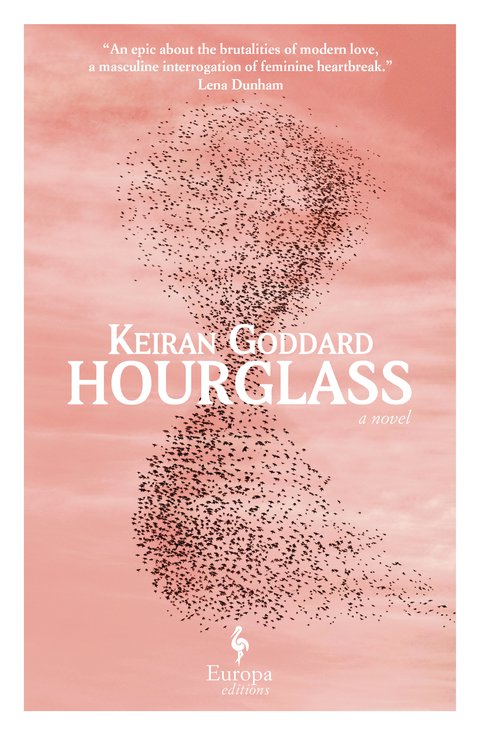 What was the genesis for this novel?
What was the genesis for this novel?
More than anything, I wanted to write a love story that had a genuine, unmediated confrontation with desire. With the ways it distorts us and makes us strange. Why does it make music sound so incredible? Why does it make us imagine the person we love is always seconds away from dying in some horrific and extremely unlikely way? Why does it make us use weird words and cry on public transport? Why does it make us brave, and capable of imagining new ways of living? And, crucially, how do we carry those instincts of world-making and courage beyond the limits of the relationship itself?
At times, the rhythm of the narrative made me think of poems by Pablo Neruda and Octavio Paz. I'm thinking of passages such as when the narrator refers to his girlfriend as, "Not the most beautiful person I have ever seen. The most beautiful thing. Which is a much bigger category. And I cannot turn away." Which poets have inspired you the most, and in what ways do you think they may have influenced this book?
That's incredibly flattering so, firstly, thank you. I can't say that it was conscious, but I suppose I am drawn to poets who work in a declarative, emotive and sometimes repetitive mode, including Neruda. I also love, in no particular order: Blake, Bishop, Rilke, Celan, Donaghy and a bunch of contemporary poets like Luke Kennard, Martha Sprackland and Holly Pester. In terms of how they influence the novel, I think more than anything it is to do with the heightened value placed on rhythm and image, and trusting that the emotional sense of passage is able to be conveyed in less conventional syntactic ways.
I was fascinated by the style you adopted for this work: a series of short chapters consisting of brief sentences. What was the effect you wanted to create with this structure? And how do you feel this structure mirrors the psyches of your characters, if at all?
I wanted the prose to be accretive, to give the sense of a tumbling accumulation of feelings and observations. It's also closer to how we actually think, right?--staccato and slightly impressionistic? That said, I wanted the structure to be welcoming, I hate the idea that anything that might be seen as mildly unconventional is automatically deemed to be distancing or alienating. Not least because it massively patronises the intelligence of readers. Lots of very popular things throughout history have been vaguely experimental; some of the biggest albums and most popular books are actually pretty odd. Death to the assumption of the lowest common denominator reader!--they don't exist, no matter how hard the publishing industry tries to manufacture them.
One theme that recurs throughout Hourglass is your narrator's complicated relationship with faith and religion. Early on, he writes that, on some mornings, "I think I am God." When he and his girlfriend go for a walk near the start of the novel, he says, "God was following us." By the end, he shows signs of doubt, even stating, "God is not with me." Can you talk a bit about religion's role in the narrative and what you, through your narrator, are saying about its role in modern life?
This is a really heavy question, and one that would take me pages and pages to even begin to answer. Perhaps one thing I could say, though, is that I was very interested in the resonances between the ways in which we seek transcendent experience via desire and love and the ways in which we do so via communing with god. It's sometimes really hard to distinguish between a sunbeam and the sun, between a feeling of joy and the true source of all joy. And maybe, for want of a better definition, love is just the act of being able to consistently move beyond the refraction of the light, the sunbeam, and toward its ultimate source, the sun. And if you are really, really lucky, if you are blessed, then you find someone or something that allows you to feel the sun, not the sunbeam. Even if it's just for a while. Hourglass is about catching, and ultimately fumbling, that gift.
I'm curious about your decision to investigate your themes by writing a novel rather than through poetry. As someone who has written both, what do you see as some of the advantages and disadvantages of each genre?
Hourglass was always going to be a novel. This isn't a very fashionable thing to say, but I'm not sure I have much of a choice about how, when and what form my writing comes to me. It is a mysterious process and I reckon my job is just to listen as carefully as I can and rearrange the pieces that are given to me when I do.
What are you working on next?
I have finished a second novel, I See Buildings Fall Like Lightning, which will be out in early 2024. It's a story about working-class friendship, hope, sex and despair. It's more fun than it sounds. I hope. --Michael Magras
Book Candy
Book Candy
The New York Public Library recommended "new picture book biographies about Black activists, authors, trailblazers & more."
---
Mental Floss examined "12 widely repeated phrase origins, debunked."
---
A new online collection presents all of the original illustrations from Charles Dickens's novels, Open Culture reported.
---
" 'Forgotten archive' of medieval books and manuscripts discovered in Romanian church," Medievalist.net reported.
Maame
by Jessica George
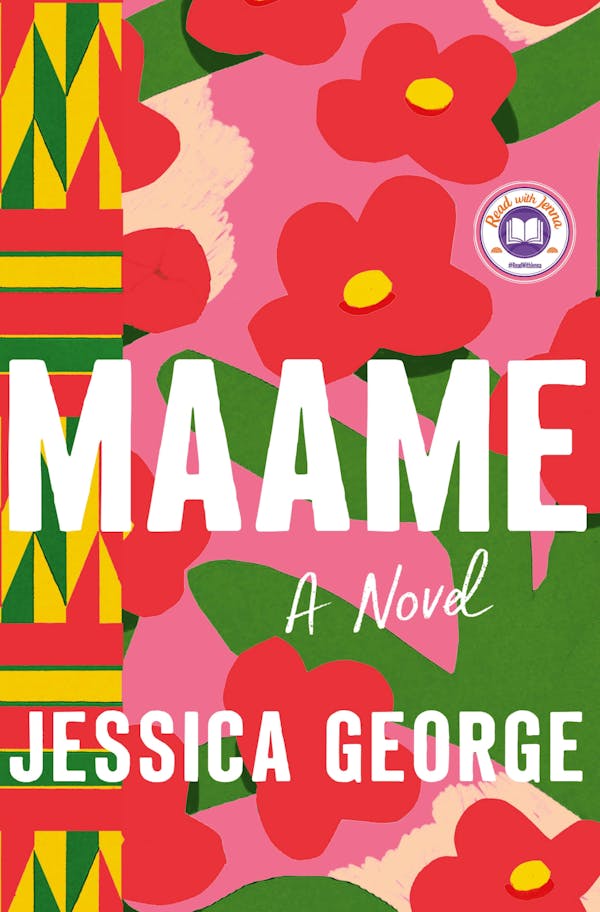 Jessica George's wry, compassionate debut novel, Maame, follows Madeleine "Maddie" Wright as she attempts to find some independence, assert herself at the publishing office where she works, deal with microaggressions from flatmates and coworkers, and maybe even find love. Maddie is used to being the responsible one. She's the dutiful daughter in her Ghanaian-British family, the one who cares for her dad as his Parkinson's gets worse and her mother spends more and more time working (and maybe doing other things) in Ghana.
Jessica George's wry, compassionate debut novel, Maame, follows Madeleine "Maddie" Wright as she attempts to find some independence, assert herself at the publishing office where she works, deal with microaggressions from flatmates and coworkers, and maybe even find love. Maddie is used to being the responsible one. She's the dutiful daughter in her Ghanaian-British family, the one who cares for her dad as his Parkinson's gets worse and her mother spends more and more time working (and maybe doing other things) in Ghana.
"Maame," which can mean "woman" or "mother" in Twi, has been Maddie's family nickname for years, but as George's narrative opens, Maddie is beginning to resent it. She's always been a hard worker, careful with money and attentive to her family's needs. But she's tired of single-handedly dealing with her dad's care on top of her own responsibilities and resents her mother for swanning off to Ghana so often and leaving Maddie holding the bag. Her older brother, James, lives nearby, but he's usually too busy pursuing his (supposedly) high-powered career to help Maddie out, financially or otherwise. With the help of her two no-nonsense best friends, a new job at a small publishing house and a lot of late-night Google searches, Maddie attempts to reinvent herself--or simply to discover her own identity beyond Maame.
George writes with honesty and empathy for her characters, tracing Maddie's journey from insecure, anxious late bloomer to (slightly) less self-conscious twentysomething. Painfully aware that she's behind her peers in hitting a lot of the traditional milestones--first grown-up flat, first serious relationship, even first time having sex--Maddie turns to the Internet as a safe, non-judgmental space to ask her embarrassing questions. Though Maddie is intelligent and thoughtful, her anxiety about fitting in and her lack of experience often make her second-guess her own ideas and choices. Readers get an intimate glimpse into her thoughts and struggles through her Google searches, which read like a list of particular (yet universal) twentysomething concerns: What to do when you've been fired? How long do guys wait before asking a girl on a date? Is pre-date exhaustion a thing? Later, she has questions for Google about the particulars of dating: Is a first date at his house normal? Does a third date mean sex? When a family tragedy strikes, the Google searches turn somber: What are symptoms of a panic attack? How do you recover after loss?
Although much of Maddie's journey relates to her personal life, she's also dealing with career challenges--getting fired from a job she hates ("When Waterloo station approaches, I brace myself for another day at a job Google itself has deemed deserving of a bronze medal in the race to unhappiness"), then finding a new gig at a publishing house. Though she enjoys the work, navigating the office social politics proves exhausting, especially when she's usually the only Black person in the room. Readers will root for Maddie as she struggles to make her voice heard at work, while questioning whether she wants to be there at all. Her flatmates, Cam and Jo, waver between being supportive and indifferent, inviting her on a few nights out but seeming not to be too interested in her. Maddie herself, though fiercely loyal to her few close friends, isn't sure what to make of this confusing web of new social connections, especially when she finds herself attracted to Sam, one of Jo's exes who shares Maddie's thoughtful nature and her cultural background.
Despite the several meanings of "Maame" in Twi, the book delves most deeply into the ways it means "mother": both how Maddie cares for her family in an almost maternal role, and her complicated relationship with her own mother. Opinionated and loud, a devout Christian (when it suits her), Maddie's mother has strong opinions about the way her daughter should behave and the kind of man she should bring home. Part of Maddie's journey into adulthood is learning to stand up to her mother and learning to recognize the ways in which the label "Maame" has become a straitjacket she'd prefer to escape. George portrays Maddie's family members with compassion; even James has his own struggles that he's hesitant to share with Maddie. Later in the book, Maddie and her mother are able to have several honest (if still frustrating) conversations about their relationship and the things Maddie is learning about herself.
Full of dry humor and entirely relatable moments, Maame is a warmhearted, often hilarious account of one woman's journey through her awkward yet exciting 20s. Readers will root for Maddie to find self-confidence and happiness, both at work and in her personal life. As she deals with personal finances, flatmate issues, joy, grief and even figuring out what she likes to eat, Maddie is gradually getting to know herself. George's narrative is a tribute to all women who make the effort--no matter how difficult or confusing--to take control of their own lives. --Katie Noah Gibson
Beyond Being a Good Daughter
An Interview With Jessica George
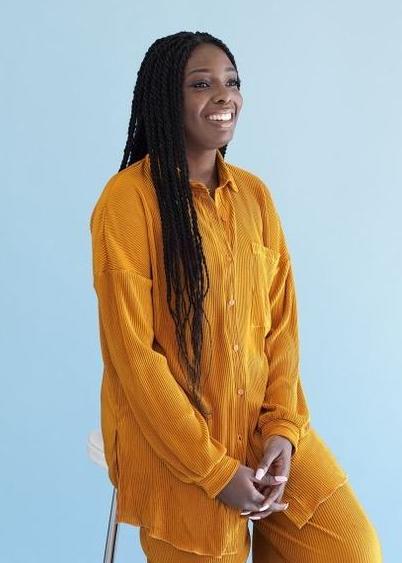 |
|
| Jessica George (photo: Suki Dhanda) |
|
Jessica George was born and raised in London to Ghanaian parents and studied English Literature at the University of Sheffield. After working at a literary agency and a theatre, she landed a job in the editorial department of Bloomsbury UK. Her first novel, Maame (St. Martin's Press, February 7, 2023) chronicles the journey of a twentysomething woman as she comes to terms with a role she did not seek and discovers who she really is.
What was the inspiration for Maame and Maddie's story?
Maame started off as very stream-of-consciousness-heavy diary entries. I hadn't had a diary since I was 15, but when my dad died in 2020, I picked up a random notebook and began writing down how I felt. I wasn't writing so much for cathartic release at the time, but more in an effort to understand what was happening. By the time I'd finished writing, I'd realised there was no understanding it: that maybe grief exists as something that cannot be understood, only felt.
"Maame" is Maddie's family nickname, but she has complicated feelings about it.
"Maame" in itself is a lovely word, even melodic when spoken, and is often used as a term of endearment, akin to "sweetheart" or '"darling." The actual definition is: "to be a woman or a mother." I believe the words "mother" and "woman" are interchangeable in Maddie's case. In this story, Maddie's nickname is used as an excuse to give her a lot of responsibility very early on, to give her the duties of a mother without her being one. However, the responsibility and the pressure of looking after and taking care of so much, of being independent (or alone?) for so long, leads to resentment, guilt and anxiety.
By the end of the novel, Maddie chooses to detach herself from the name and focus on the positive things "Maame" has done. There are some benefits to being the responsible, caring, thoughtful one, especially for those who selflessly benefit from these attributes. Although necessary to see the effect "Maame" has had on her life, her main goal is not to pass it on. I like to think that's how Maddie will deal with the name going forward.
One of Maddie's coping mechanisms for when she doesn't know something, or feels overwhelmed, is Internet searching.
Google really is the gift that giveth and taketh away. Sometimes I think, "Where would we be without Google?," which is maybe a grossly millennial response to the Internet. I once posed this question to someone older and the response I received was: "We used our common sense." I've not posed the same question since.
However, for Maddie, her constant need to Google is used to highlight her loneliness and low self-esteem; she probably sees her questions as too inane to bother her friends with. Maddie doesn't share a lot, she shoulders everything; people can bother her with things and she'll always help, but she can't do the same--it's rarely reciprocated--except on Google. Online, she doesn't have to give in order to get anything back. There's also some comfort in anonymity when it comes to the late-bloomer aspect; she asks the Internet about first dates and first roommates, knowing that some (if not all) of her peers have already experienced these things a decade earlier.
It's also a wonderful addition in terms of hilarity. I touch on some heavy topics in Maame, but hopefully balance it out with lightness and humour too.
Maddie struggles to be a "good" daughter (dutiful, loving, responsible) and also assert her independence from her parents. This means different things with her mother and her father.
Asserting independence from your parents is perhaps a theme many will relate to, because it has more to do with thinking for yourself and doing not what you've been told, but what you feel is right. Maddie comes from a culture where disobeying your parents is practically an offence: you must always respect your elders. These expectations are ingrained in you from an early age, so they prove difficult for Maddie to shake in her adulthood. However, the independence from her father is less mental than physical. It's about creating distance between herself and someone she has spent so much of her time with, someone who perhaps needs her around. The words "independent" and "dutiful" are almost antithetical, so it comes with great difficulty to Maddie when she attempts to figure out how to be both.
As the only Black person in her work settings (and also sometimes in social settings), Maddie deals with various microaggressions and misperceptions from her white coworkers and flatmates.
It felt important to touch on this in Maame because since joining the creative industry, I have only ever worked in majority white spaces, often being the only Black person in the room. It's a more mentally exhausting environment than people would assume. There exists a level of loneliness that some colleagues will be completely unaware of. They're likely to think--and that's if it crosses their mind at all--that you can't feel lonely when you're part of a big team, a large office, when you all work closely together, but what they might not understand is that's a very easy thing for them to assume. They've likely only ever worked in homogeneous environments, so they've never experienced isolation on that level. There's also a lot of overthinking and reading-between-the-lines involved, because that which sounds innocuous very rarely is. Maddie spends a good portion of her work life attempting to navigate this.
Maddie deals with various kinds of grief throughout the novel, after personal and professional loss and challenges. How does she deal with grief and other uncomfortable emotions?
Maddie hasn't been given the space to openly express her emotions as she's often too busy dealing with the emotions of others, so when she experiences grief, she doesn't know what to do with it. Her inability to properly process leads to dubious physical relationships, battered friendships, turmoil at work and eventually, a mental breakdown. But when given the space to talk openly and honestly, it's a big turning point for Maddie.
Part of Maddie's story relates to her attempts to go on dates, maybe even find someone special. She struggles with dating, confidence, sex and love.
There's kind of a question of when do you learn this stuff? and what happens if you're learning it 5-10 years later than the average person? Some things, Maddie learns the hard (and sometimes necessary) way: personal experience. Other times she can rely on her two best friends for help. But dating, sex and love have never been the easiest areas of life to grasp, so watching Maddie traverse these fresh waters only adds to her endearing character. --Katie Noah Gibson
Great Reads
Rediscover: Ted Bell
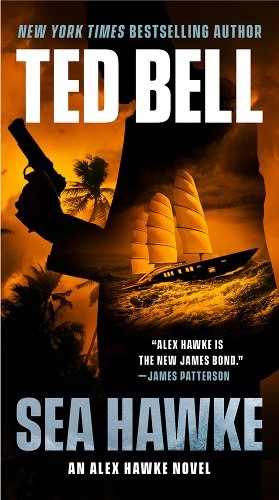 Author Theodore August Bell III--better known as Ted Bell--died on January 20 at age 76. He wrote several series: the Alex Hawke spy thrillers and the young adult adventure series Nick McGiver Adventures Through Time. Among his dozen Alex Hawke titles, Tsar dealt with the rise of the "New Russia," the return of the KGB and the new "Evil Empire"; Warlord revolved around a vendetta against the British royal family beginning with the 1979 murder of Lord Mountbatten; and Overkill dealt with Vladimir Putin and the kidnapping of Hawke's son.
Author Theodore August Bell III--better known as Ted Bell--died on January 20 at age 76. He wrote several series: the Alex Hawke spy thrillers and the young adult adventure series Nick McGiver Adventures Through Time. Among his dozen Alex Hawke titles, Tsar dealt with the rise of the "New Russia," the return of the KGB and the new "Evil Empire"; Warlord revolved around a vendetta against the British royal family beginning with the 1979 murder of Lord Mountbatten; and Overkill dealt with Vladimir Putin and the kidnapping of Hawke's son.
Before becoming a writer, Bell had a career in advertising, which began in 1976 when he joined Doyle Dane Bernbach as a junior copywriter. He became the youngest v-p at the company before becoming creative director at Leo Burnett Co., where he was named president and chief creative officer in 1986, at age 40. In 1991, Hall joined Young & Rubicam, London, as vice chairman and worldwide creative director. After 10 years at the creative helm of Y&R, he retired in 2001 to write full time.
In 2011-2012, Sir Richard Dearlove, former chief of MI6, sponsored Bell to become a visiting scholar at Cambridge University. He was named writer-in-residence at Sydney-Sussex College, Cambridge. In 2013, Bell gave the inaugural lecture for the exhibit "Spy: The Secret World of Espionage" at the Reagan Library in California. Sea Hawke, the most recent Alex Hawke novel, is available in paperback from Berkley ($9.99).


